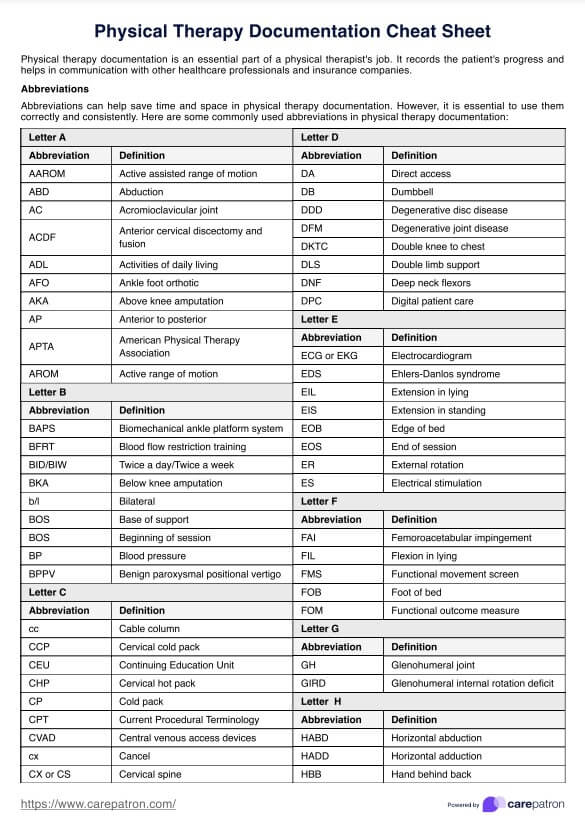Yes, integrating standardized outcome measures into documentation is highly recommended for physical therapists. It provides objective, measurable data to track the patient's progress and supports clinical decision-making.

Physical Therapy Documentation Cheat Sheet
Streamline your physical therapy practice with our essential Physical Therapy Documentation Cheat Sheet. Enhance accuracy, efficiency, and patient care.
Physical Therapy Documentation Cheat Sheet Template
Commonly asked questions
Clinical reasoning is essential in physical therapy documentation as it guides the therapist in making informed decisions regarding the patient's care. By systematically evaluating the patient's condition and response to various interventions, therapists can justify their treatment choices and adjustments in the documentation. This rationale not only supports clinical decision-making but also enhances the overall quality of care provided.
When incorporating manual therapy techniques into documentation, it's important to detail the specific methods used, the areas targeted, and the patient's response to these interventions. This thoroughness serves to ensure that the rationale behind the selected techniques is clear, ultimately supporting patient progress and accountability.
EHR and practice management software
Get started for free
*No credit card required
Free
$0/usd
Unlimited clients
Telehealth
1GB of storage
Client portal text
Automated billing and online payments











